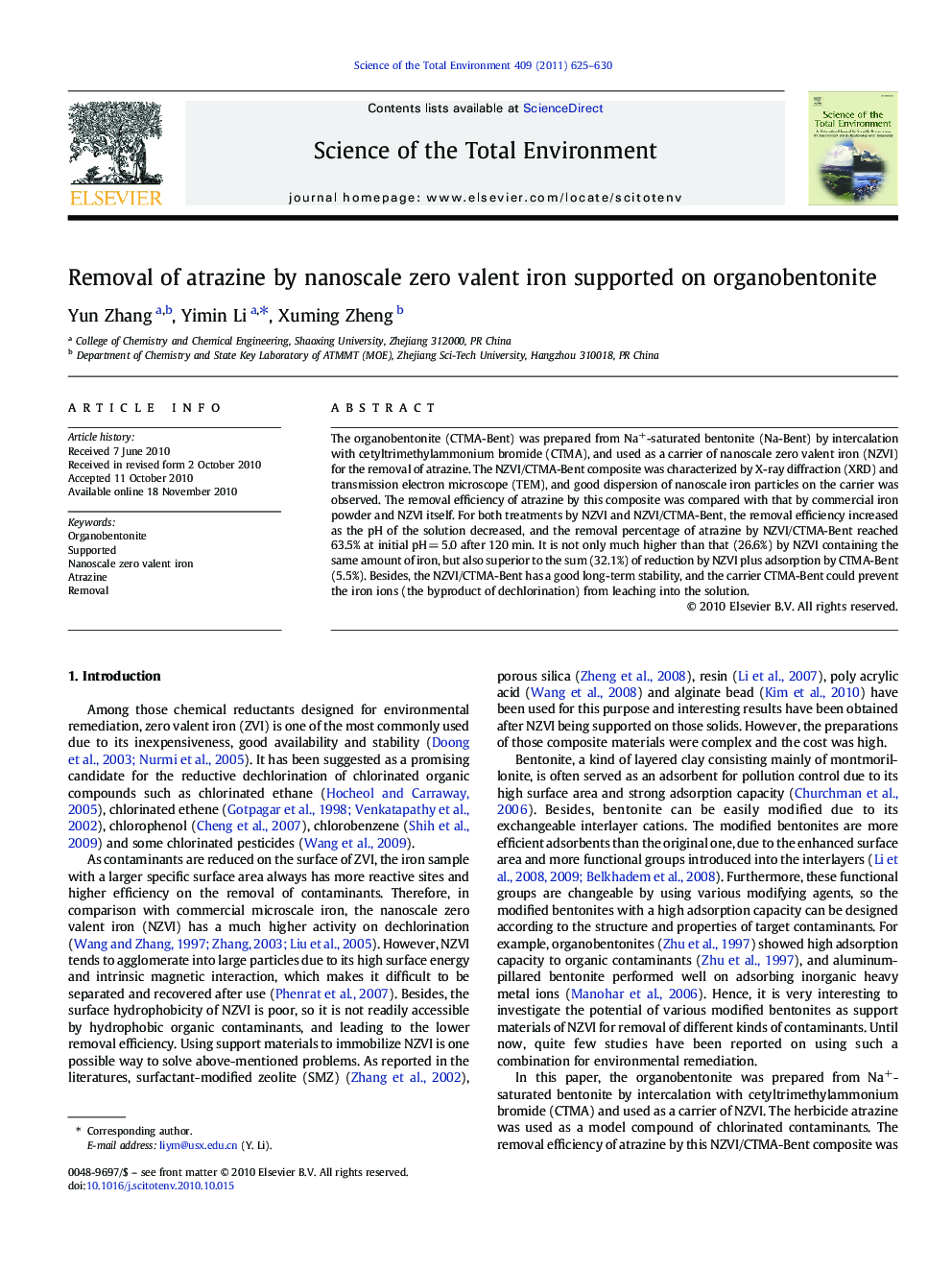| Article ID | Journal | Published Year | Pages | File Type |
|---|---|---|---|---|
| 4430097 | Science of The Total Environment | 2011 | 6 Pages |
The organobentonite (CTMA-Bent) was prepared from Na+-saturated bentonite (Na-Bent) by intercalation with cetyltrimethylammonium bromide (CTMA), and used as a carrier of nanoscale zero valent iron (NZVI) for the removal of atrazine. The NZVI/CTMA-Bent composite was characterized by X-ray diffraction (XRD) and transmission electron microscope (TEM), and good dispersion of nanoscale iron particles on the carrier was observed. The removal efficiency of atrazine by this composite was compared with that by commercial iron powder and NZVI itself. For both treatments by NZVI and NZVI/CTMA-Bent, the removal efficiency increased as the pH of the solution decreased, and the removal percentage of atrazine by NZVI/CTMA-Bent reached 63.5% at initial pH = 5.0 after 120 min. It is not only much higher than that (26.6%) by NZVI containing the same amount of iron, but also superior to the sum (32.1%) of reduction by NZVI plus adsorption by CTMA-Bent (5.5%). Besides, the NZVI/CTMA-Bent has a good long-term stability, and the carrier CTMA-Bent could prevent the iron ions (the byproduct of dechlorination) from leaching into the solution.
Research Highlights►The organobentonite CMTA-Bent as the carrier can prevent NZVI from aggregation. ►The NZVI/CTMA-Bent composite has a higher efficiency on removing atrazine than NZVI. ►The higher removal efficiency is related to the adsorption by CMTA-Bent. ►CMTA-Bent can reduce the leaching of iron ions as the secondary pollutant.
